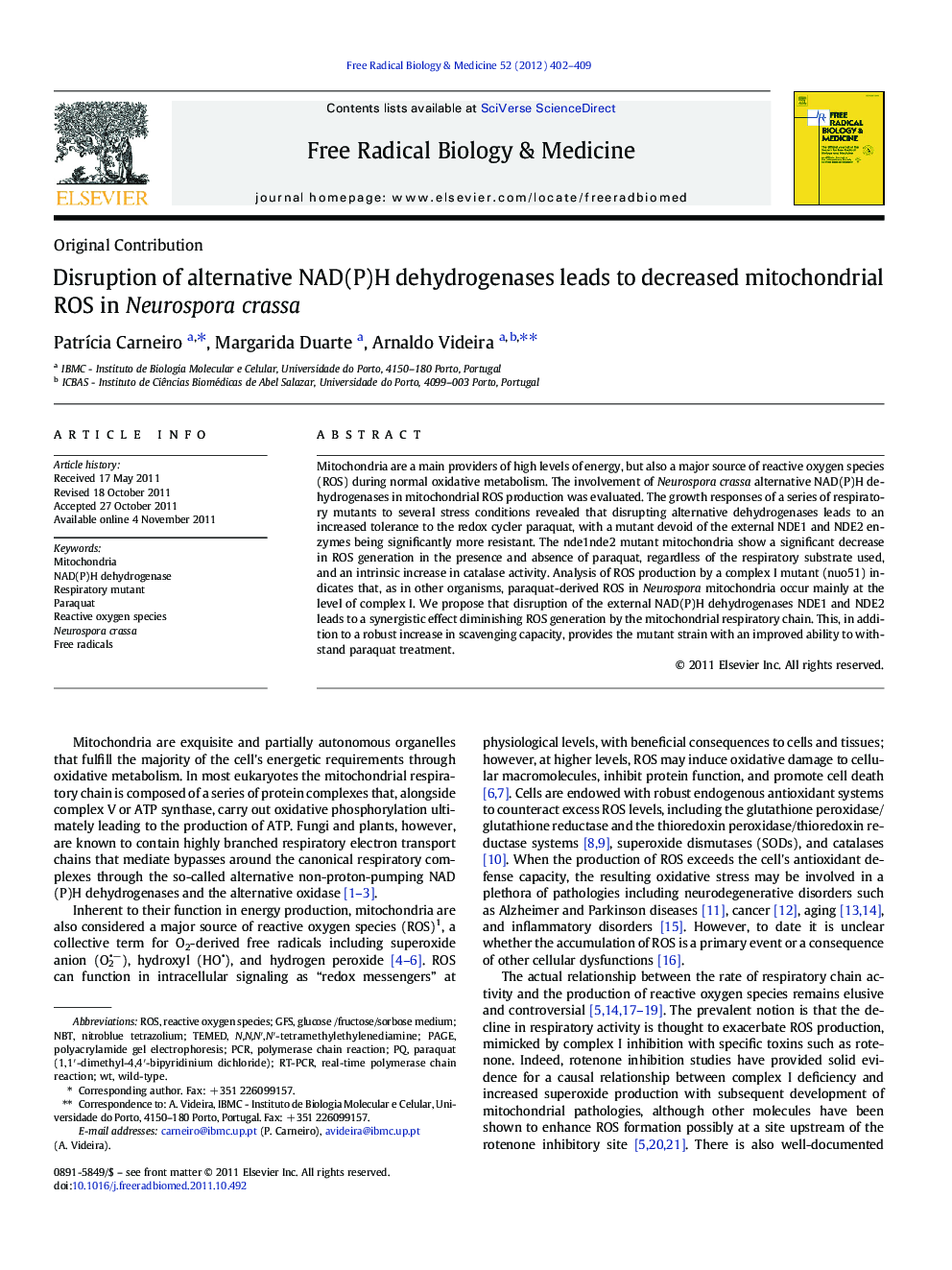| Article ID | Journal | Published Year | Pages | File Type |
|---|---|---|---|---|
| 1908941 | Free Radical Biology and Medicine | 2012 | 8 Pages |
Mitochondria are a main providers of high levels of energy, but also a major source of reactive oxygen species (ROS) during normal oxidative metabolism. The involvement of Neurospora crassa alternative NAD(P)H dehydrogenases in mitochondrial ROS production was evaluated. The growth responses of a series of respiratory mutants to several stress conditions revealed that disrupting alternative dehydrogenases leads to an increased tolerance to the redox cycler paraquat, with a mutant devoid of the external NDE1 and NDE2 enzymes being significantly more resistant. The nde1nde2 mutant mitochondria show a significant decrease in ROS generation in the presence and absence of paraquat, regardless of the respiratory substrate used, and an intrinsic increase in catalase activity. Analysis of ROS production by a complex I mutant (nuo51) indicates that, as in other organisms, paraquat-derived ROS in Neurospora mitochondria occur mainly at the level of complex I. We propose that disruption of the external NAD(P)H dehydrogenases NDE1 and NDE2 leads to a synergistic effect diminishing ROS generation by the mitochondrial respiratory chain. This, in addition to a robust increase in scavenging capacity, provides the mutant strain with an improved ability to withstand paraquat treatment.
Graphical abstractFigure optionsDownload full-size imageDownload high-quality image (67 K)Download as PowerPoint slideHighlights► Alternative NAD(P)H dehydrogenases have a role in mitochondrial ROS production. ► Neurospora nde1nde2 mutant strain displays increased paraquat resistance. ► Mitochondria from nde1nde2 mutant strain exhibit decreased ROS production. ► nde1nde2 exhibits an intrinsic increase in mitochondrial catalase. ► Complex I is responsible for paraquat-derived ROS in Neurospora mitochondria.
